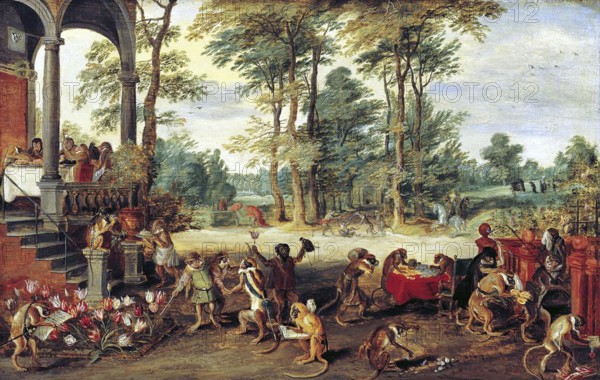
Légende
Brueghel's satirical comment reflects the collapse of 'Tulipomania' in the 1640s. In the painting, speculators are depicted as brainless monkeys in contemporary upper-class dress. In a commentary on the economic folly of Tulipomania, one monkey urinates on the previously valuable plants, others appear in debtor's court and one is carried away to the grave.
Tulip mania or tulipomania (Dutch names include: tulpenmanie, tulpomanie, tulpenwoede, tulpengekte and bollengekte) was a period in the Dutch Golden Age during which contract prices for bulbs of the recently introduced tulip reached extraordinarily high levels and then suddenly collapsed.
At the peak of tulip mania, in February 1637, some single tulip bulbs sold for more than 10 times the annual income of a skilled craftsman
Date
10 mai 2012
Crédit
Photo12/imageBROKER/Pictures From History
Notre référence
BRK25G88_042
Model release
NA
Property release
Non
Licence
Droits gérés
Format disponible
49,0Mo (2,9Mo) / 44,0cm x 27,9cm / 5192 x 3296 (300dpi)